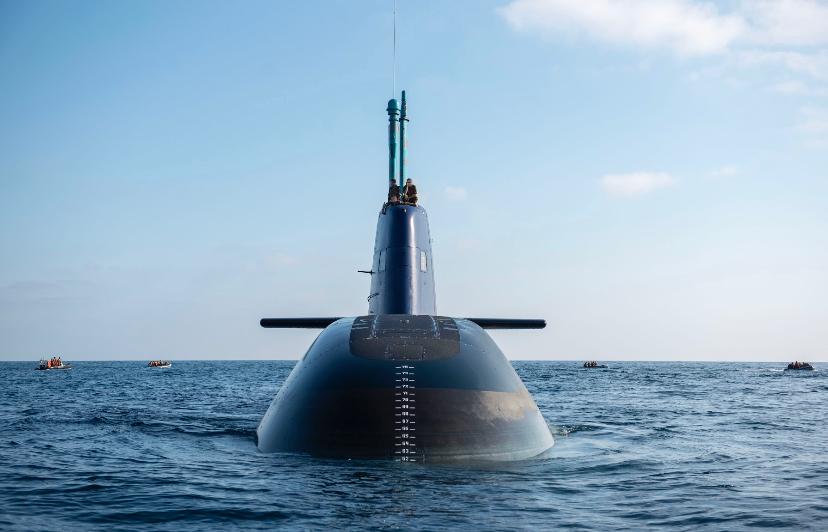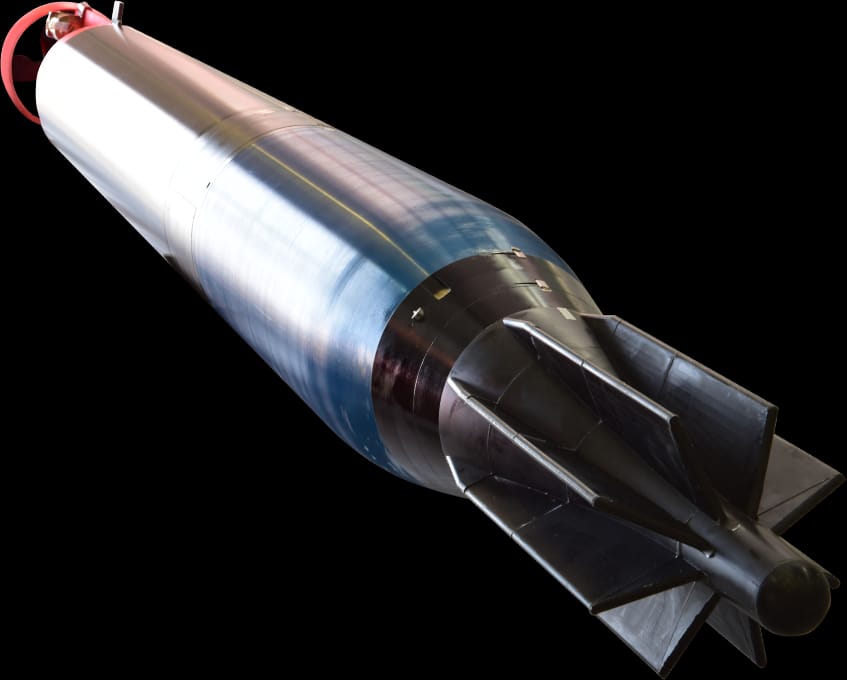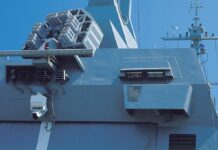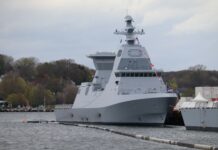In order to satisfy the needs of a modern Navy, progress in technology has to happen in the field of underwater weapons and countermeasures. This is because the overall threat has increased and technologies are constantly being upgraded to meet ever-growing challenges.
Since the end of the Cold War, it is believed that submarines, particularly the stealthy American vessels, are essentially immune to dangers posed by underwater detection systems. However, the ability of submarines to conceal themselves through quieting measures alone has decreased as new detection techniques have emerged. These systems use other submarine features, not only emitted noise.
Since early computer processors were unable to handle the complex models required to detect even the slightest changes in the environment generated by a quiet submarine, most of these alternative technologies have been around for a while, but their full potential has only recently been realised. These detection methods can now be used since ‘big data’ has made it possible to run complex oceanographic models in real-time.
Submarines typically employ a mid-frequency (MF) sonar that ranges from 1,000 to 10,000 hertz (Hz). When compared to low frequency (LF) sonar, which has a frequency of less than 1,000 Hz, the latter has a greater field of view but produces less accurate heading and range data. The people who design and produce devices for underwater detection, engagement, and evasion face an ever-growing challenge, particularly in war situations. To get the best possible picture of the underwater threats and the means to deal with them, ESD talked with members of the Israeli Navy and the companies that supply its underwater tools. This Israeli Navy is involved in operations on a daily basis, on the surface and underwater to counter any hostilities from Iran and its proxies emanating mainly from Lebanon and Syria.
According to foreign sources, an Israeli submarine is stationed in the Persian Gulf, so that Israel will have a ‘second strike’ capability, in case Iran decides to use its ballistic missiles against Israel. While Iran is undertaking great efforts to achieve a military nuclear capability and invests heavily in its long-range ballistic missile force, Tehran is actively modernising its submarine force. At this point in time, neither ballistic nor cruise missiles can be launched from any of Iran’s submarines. Iran started a programme in the 1990s to buy or domestically manufacture mines and torpedoes for all of its sub-surface boats.
According to reports, in 2005, it introduced two local production lines for wake-homing torpedoes with ranges of up to 20 km (533 mm and 324 mm). For its submarines, Iran has since developed ballistic and cruise missile technologies. Iran has also successfully test-launched a cruise missile from one of its Ghadir class ships on 24 February 2019. The Tareq and Fateh submarines allegedly share the same capability, according to the Islamic Republic News Agency (IRNA).
Subsurface Threats
In recent years, the Israeli Navy has become a very capable competitor in securing allocations from the Israeli defence budget. Consequently, the Israeli Navy is now receiving the right tools to be able to conduct operations above and below the water. Among its recent acquisitions is the Dolphin-II (or Dakar class) submarine built in Germany. The submarine’s sonar and defence systems are notably improved compared to their predecessors, and a significant portion of the systems installed on submarines are developed and manufactured in Israel. Most details surrounding the submarines are highly classified and the German shipyard was asked to cover parts of the submarines under while under construction to keep some capabilities classified.

Credit: IDF
The submarines are believed to be capable of launching cruise missiles developed in Israel (according to various foreign reports, these are advanced versions of Israeli missiles dubbed ‘Popeye’); reportedly, they have a range of 1,500 km and can also be fitted with nuclear warheads.
The other task of the Israeli Navy is to protect the country’s long shoreline and the country’s EEZ, which includes huge natural gas reservoirs being pumped from the bottom of the Mediterranean. A top Israeli expert who served in the Navy and who asked not to be named, told ESD that Israel now has two fronts that pose an underwater threat. One is the Gaza strip, from where attempts were made in recent years to enter Israel in order to conduct terror attacks. The second threat is Lebanon.
After Hamas in Gaza lost the advantage of its rockets due to the high successful interception rate of the Israeli Iron Dome system, and after all the tunnels dug under the border were discovered and destroyed, the sea has since become the active front. The Israeli expert also noted that the tools that Hamas has for underwater attacks are very basic: “The situation in Lebanon is totally different. Hezbollah, Iran’s main proxy, is getting underwater systems and that may include mini-submarines manufactured in Iran.” Previous attempts to enter Israel using armed divers were detected and the divers were killed.
Realising that these threats are both real and imminent, Israel has increased its underwater defence and attack capabilities. This capability is based on new advanced submarines and on very advanced underwater systems developed by Israeli companies. The new submarines are just one element in Israel’s toolbox to defend against underwater threats of all types.
When it comes to underwater combat, some major requirements have to be dealt with at an early stage. Vice Admiral (retd.) Eliezer Marum, former Commander of the Israeli Navy told ESD that in order to detect hostile submarines, countries take different measures and, in most cases, combine them to achieve the best result. He added that some countries such as the US, have a fixed array of sonars along their most sensitive regions. Other countries prefer to use mobile sonars carried by fixed-wing or rotary aircraft that deploy sonars into the sea when something suspicious is detected or when an intelligence organisation points to the possible presence of a hostile submarine. Marum also remarked that: “There are basic sonars, mostly passive, and if they detect something an active sonar is thrown into the water to get the exact position of the hostile submarine.”
According to Marum, navies also use towed sonar systems. He pointed to the fact that in different oceans, the big difference between the temperature of the water near the surface and at lower depths makes it very difficult for sonars to perform accurate detection. “The best example of this is the Mediterranean. In summer, the surface layer temperature can reach 30 °C. If your detection systems are not capable of going through this warmer layer, detection is almost impossible. This makes this sea a paradise for submarines that are trying not to be detected.” Marum also said that this was the reason why the Israeli Navy was investing in additional, detection systems. When a submarine is submerged, it has to stay in uninterrupted contact with its home base. This has prompted many companies to develop unique communication systems for this to happen.
New Tools
It can be said that Israeli companies, especially state-owned Rafael have developed advanced systems of this kind. One is the company notable developments in this field is FloatLink, a buoy that enables the submarine to communicate with its base while in ‘deep and silent’ mode. While the specifics of this system are classified, its general mode of operation can be shared. FloatLink is ejected from the submarine using its torpedo launching tubes, and floats to the surface. Following this, a SATCOM antenna is then unfolded from the float system, enabling two-way communications. When the transmissions end, the FloatLink self-destructs, thereby minimising the danger of an enemy locating the submarine. In some scenarios, the submarine operates as an underwater base for ‘frogmen’ who exit the submarine to carry out different missions underwater or on the surface without being detected.
The Israeli Navy’s Yaltam unit specialises in underwater missions and is equipped with highly classified systems that enable them to work underwater when a submarine is used as an operational base. Rafael has also developed systems aimed at protecting surface ships from torpedoes. Modern acoustic torpedoes, with advanced features that greatly enhance their capabilities, are a major threat to surface vessels. Neutralising these threats requires sophisticated, quick response, and automated countermeasures.
To counter modern torpedoes, Rafael developed the Lescut, described as an intelligent, third-generation reactive countermeasure, designed to identify incoming threats and provide a customised response. According to the manufacturer, the Lescut is launched from a surface ship and is designed to respond simultaneously to multiple torpedoes of various types – both active and passive, and programmed to defeat all types of modern torpedo logic, including range gates, Doppler shift, pulse discrimination, AGC/DVG, and others. The Lescut requires no pre-launch input or tests, shortening the response time and eliminating errors due to incorrect settings or operator mistakes.
Countermeasure operation starts automatically after launch, with the Lescut suspended at its operating depth. It then analyses the environment and selects the appropriate deception signal from its threat library for emission. As a result, acoustic torpedoes home in on the Lescut as the legitimate target, attempting to engage it and thereby allowing the real target to evade the torpedo. The Lescut operates for ten minutes, then self-destructs and sinks.
In modern maritime combat, submarines are exposed to torpedoes launched from ASW helicopters, ships, or other submarines. To counter that threat, Rafael has developed the Scutter, a self-propelled, third-generation reactive, expendable torpedo countermeasure, capable of protecting a submarine from passive and active acoustic homing torpedoes. Rafael says that Scutter has a threat library, based on intelligence programmed by the user, which is used to select the appropriate response. The Scutter is also designed to respond simultaneously to multiple torpedoes of various types – both active and passive.

Credit: Rafael
Scutter is launched immediately following a torpedo alert, moving automatically to its operating depth. It identifies the incoming torpedo, then generates and transmits deception signals. The torpedo attempts to engage and re-engage Scutter until the torpedo’s end of run. Scutter then self-destructs at the end of its mission.
Rafael recently unveiled the Scutter Mk3, a third generation (reactive) torpedo decoy. Using a receiver and a threat library, it classifies the attacking torpedo and transmits a tailored response creating multiple legitimate targets for the torpedo to home in on, distracting the torpedo away from the submarine.
Rafael has also developed the Torbuster, which the company claims is the first in-service fourth-generation hard- and soft-kill torpedo countermeasure, and that it is capable of working even in shallow waters. This system is launched from a launcher on the submarine and is claimed to be effective against all acoustic homing torpedoes, actively spoofing the incoming torpedo while sensing its proximity. The company says that once within the predefined kill range, Torbuster detonates and neutralises the hostile torpedo. Rafael is investing in the development of additional systems for the underwater combat zone, but these are presently classified.

Israeli company DSIT is also very active in developing systems for underwater security. The company’s Swordfish offers both passive as well as passive and active low-frequency towed array sonar systems. The company notes that it is capable of underwater search, detection tracking and classification in passive, active and parallel modes.
A Challenging Environment
The underwater threats on Israeli assets both on shore and at sea are numerous. This adds to the operational need to protect the Israeli Navy’s surface ships and submarines. What has been described in this article represents just a portion of systems against underwater threats that have been developed in Israel.
The underwater threat faced by Israel will only increase as military cooperation between Russia and Iran is raised to an unprecedented level. Iran supplies Russia with armed drones that are used in Ukraine and Russia is helping Iran build a more capable air force and navy. As such, this provides ample incentive for Israel to invest more in underwater systems.
Arie Egozi





